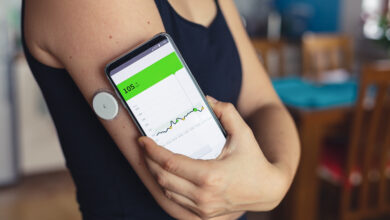The Future of Healthcare: Smart Implantable Pumps Market 2032
In today’s rapidly advancing medical landscape, smart implantable pumps have emerged as a groundbreaking solution for managing chronic diseases and improving patient outcomes. These sophisticated devices offer precise drug delivery, ease of use, and enhanced patient compliance. The global smart implantable pumps market, valued at USD 2.55 billion in 2023, is on a robust growth trajectory, projected to reach USD 5.05 billion by 2032, with a CAGR of 7.9%. Let’s delve deeper into the factors driving this market and the key players shaping its future.
Driving Factors of the Smart Implantable Pumps Market
1. Growing Prevalence of Chronic Diseases
Chronic diseases such as diabetes, cancer, and cardiovascular conditions are on the rise globally. Smart implantable pumps provide an effective means to manage these diseases by delivering medication directly to the targeted area, reducing side effects, and improving patient quality of life.
- Diabetes Management: Insulin pumps are one of the most common types of smart implantable pumps. They provide continuous subcutaneous insulin infusion, allowing for better glycemic control compared to traditional methods.
- Cancer Treatment: Chemotherapy and pain management for cancer patients can be more effectively managed with intrathecal pumps, which deliver medication directly to the spinal fluid, offering targeted relief with fewer systemic side effects.
- Cardiovascular Conditions: Certain heart conditions can benefit from smart pumps that deliver medication to manage heart rate and blood pressure, improving overall patient outcomes.
2. Increasing Geriatric Population
The aging global population is more susceptible to chronic ailments, necessitating advanced medical interventions. Smart implantable pumps cater to this demographic by offering a reliable and minimally invasive treatment option, thereby driving market growth.
- Pain Management: Elderly patients often suffer from chronic pain conditions. Intrathecal pumps provide an efficient way to deliver pain relief without the side effects of oral medications.
- Neurodegenerative Diseases: Conditions such as Parkinson’s disease can be managed with smart pumps delivering medication to specific brain regions, improving motor function and quality of life.
3. Ease of Administration
One of the key advantages of smart implantable pumps is the ease of administration. These devices can be programmed to deliver precise doses at specific times, reducing the need for frequent hospital visits and allowing patients to lead more independent lives.
- Automated Dosing: Smart pumps can be programmed for automated dosing schedules, ensuring consistent medication delivery without patient intervention.
- Remote Monitoring: Many smart pumps now feature remote monitoring capabilities, allowing healthcare providers to track patient progress and adjust treatment plans as needed.
Market Challenges
Despite the promising growth, the market faces several challenges:
- High Cost of Implantable Pumps: The initial cost of these devices can be prohibitive for many patients and healthcare systems, potentially limiting their widespread adoption. Additionally, ongoing maintenance and potential replacement costs add to the financial burden.
- Regulatory and Compliance Issues: Stringent regulatory requirements can pose hurdles for manufacturers and delay the introduction of new products to the market. Compliance with different international standards further complicates market entry.
- Risks and Complications: As with any implantable device, there are risks associated with surgery, infection, and device malfunction. Ensuring patient safety and device reliability is paramount, requiring rigorous testing and continuous monitoring.
Market Segmentation
By Type of Pump
- Insulin Pumps: Used primarily for diabetes management, these pumps provide continuous insulin delivery.
- Intrathecal Pumps: Used for pain management and spasticity, these deliver medication directly to the spinal fluid.
- Others: Include pumps for chemotherapy, cardiovascular treatments, and other specialized applications.
By Application
- Pain Management: Intrathecal pumps for chronic pain relief.
- Diabetes Management: Insulin pumps for continuous glucose management.
- Oncology: Chemotherapy pumps for targeted cancer treatment.
- Cardiovascular Diseases: Pumps for managing heart conditions.
- Others: Various applications in neurology, gastroenterology, etc.
By End User
- Hospitals: Major users of implantable pumps for acute and chronic care.
- Ambulatory Clinics: Use pumps for outpatient treatments.
- Home Healthcare: Increasing use of pumps for at-home patient management.
- Others: Including long-term care facilities and specialty clinics.
Regional Analysis
North America
- Market Size and Growth Rate: North America holds a significant share due to advanced healthcare infrastructure and high prevalence of chronic diseases.
- Key Market Players: Presence of major companies like Medtronic and ICU Medical.
- Regulatory Environment: Strict FDA regulations ensuring high safety standards.
Europe
- Market Size and Growth Rate: Strong market presence with significant growth potential.
- Key Market Players: Companies like Tricumed Medizintechnik GmbH are prominent.
- Regulatory Environment: Compliance with EU medical device regulations.
Asia-Pacific
- Market Size and Growth Rate: Rapidly growing market due to increasing healthcare investments and rising prevalence of chronic diseases.
- Key Market Players: Emerging players and expanding presence of global companies.
- Regulatory Environment: Diverse regulatory landscape with varying standards across countries.
Latin America
- Market Size and Growth Rate: Moderate growth with improving healthcare access.
- Key Market Players: Growing presence of international companies.
- Regulatory Environment: Gradual improvement in regulatory frameworks.
Middle East & Africa
- Market Size and Growth Rate: Emerging market with significant potential.
- Key Market Players: Increasing entry of global players.
- Regulatory Environment: Evolving regulations aimed at improving healthcare standards.
Competitive Landscape
The global smart implantable pumps market is highly competitive, with several key players leading the charge:
ICU Medical, Inc.
ICU Medical, Inc. is a prominent player in the market, known for its innovative infusion therapy and critical care products. Their offerings include IV smart pumps, automated pharmacy IV compounding systems, and hemodynamic monitoring systems, catering to acute care hospitals, ambulatory clinics, and other healthcare facilities.
- Product Innovations: Continuously improving pump technology to enhance patient safety and treatment efficacy.
- Market Strategy: Expanding global footprint through strategic partnerships and acquisitions.
Medtronic
Established in 1949, Medtronic is a global leader in medical technology. The company has developed a range of core technologies, including drug and biologic delivery devices, implantable mechanical devices, and advanced surgical instruments, aimed at optimizing healthcare systems worldwide.
- Technological Leadership: Pioneering new technologies in implantable devices.
- Global Presence: Strong market presence in over 150 countries.
Flowonix Medical Inc.
Founded in 2005, Flowonix Medical Inc. specializes in valve-regulated intrathecal pumps, refillable pumps, and power electromagnetic valves. Their commitment to innovation and therapy advancements helps ease patient suffering and improve quality of life.
- Innovative Solutions: Focused on developing cutting-edge pump technologies.
- Collaborative Approach: Working closely with healthcare professionals to tailor solutions to patient needs.
Other notable players in the market include Cognos Therapeutics, Inc., and Tricumed Medizintechnik GmbH, among others.
Future Trends in Smart Implantable Pumps
The future of smart implantable pumps is bright, with several exciting trends on the horizon:
1. Technological Advancements
Continual innovation in pump technology, including miniaturization, wireless connectivity, and integration with other medical devices, will enhance functionality and patient convenience.
- Miniaturization: Smaller, more discreet pumps that are easier to implant and use.
- Wireless Connectivity: Enabling remote monitoring and control of pump functions.
2. Integration with IoT and AI
The incorporation of IoT and artificial intelligence will enable real-time monitoring and data analysis, providing valuable insights for personalized treatment plans and improving patient outcomes.
- Real-Time Monitoring: Continuous tracking of patient health metrics and pump performance.
- AI-Driven Insights: Using machine learning to optimize treatment protocols.
3. Personalized Medicine
As the medical field moves towards personalized medicine, smart implantable pumps will play a crucial role in delivering tailored treatments based on individual patient needs and genetic profiles.
- Tailored Therapies: Customizing medication delivery based on patient-specific data.
- Genetic Profiling: Using genetic information to fine-tune treatment plans.
Market Growth Strategies
To capitalize on the growing demand for smart implantable pumps, companies are adopting various strategies:
- Mergers and Acquisitions: Consolidating market position through strategic acquisitions.
- Strategic Partnerships and Collaborations: Partnering with healthcare providers and technology companies to enhance product offerings.
- Research and Development Investments: Investing in R&D to drive innovation and maintain competitive edge.
- Market Penetration in Emerging Economies: Expanding presence in developing regions with high growth potential.



